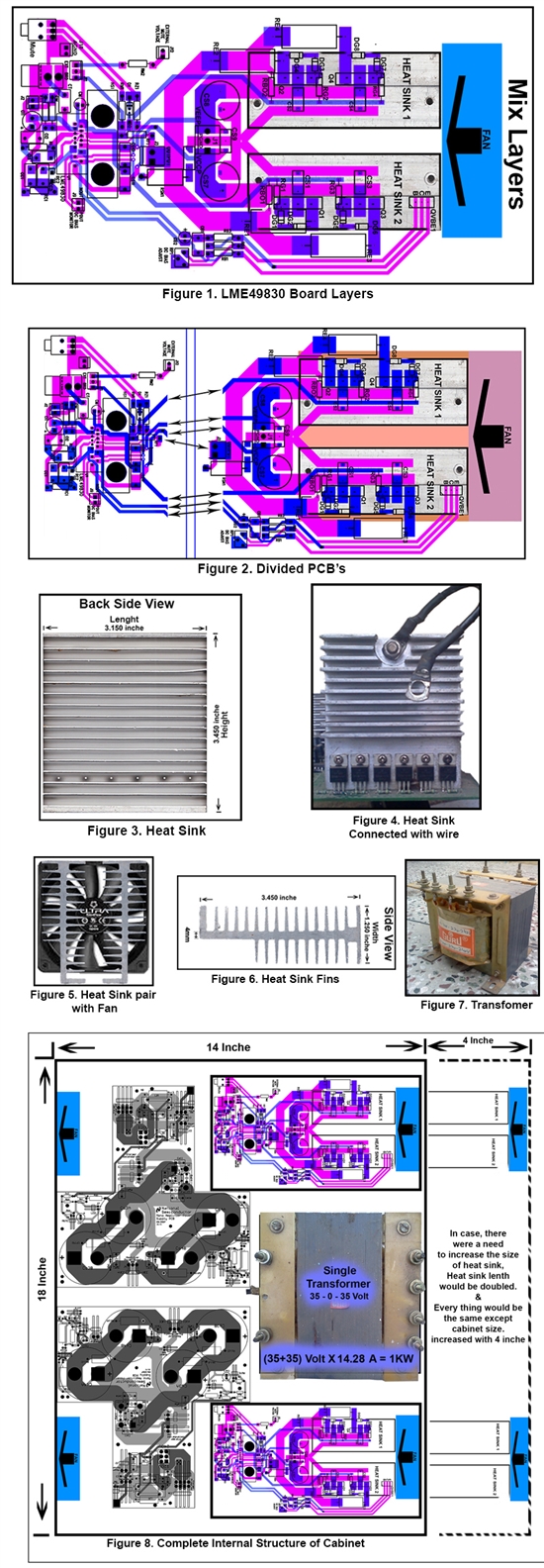Hi,
I am working on stereo amp based on LME49830. For it I am following the Reference Designs given in PDF files snaa057a & snaa058a completely. I live in Delhi (India). Where getting the branded components is very hard, which is creating the need to compromise with components values and brands. So my quarry will be based on changed brands and values.
Please don’t mind, if I keep asking questions or silly questions. :(
1Q. is it possible to use (Q VBE1) TIP31C Instead of BD139? If yes, what changes would be required?
(Note- I saw in data sheets, transistor leads positions are different)
2Q. is it possible to use single primary & dual secondary (35V, 500VA per secondary coil) in Transformer instead of using 4 transformers 24V, 300VA for stereo? If yes what changes would be required?
(Note- I want to use double Power Supply for stereo but with single transformer)
3Q. Using dual rectifier instead of single rectifier, Will it be benefited?
(Note- in PDF file snaa057a, single rectifier with torrid transformer is used, but I want to use dual rectifier with dual secondary transformer.)
Thanks For your support.
Regards
Pankaj Kumar



